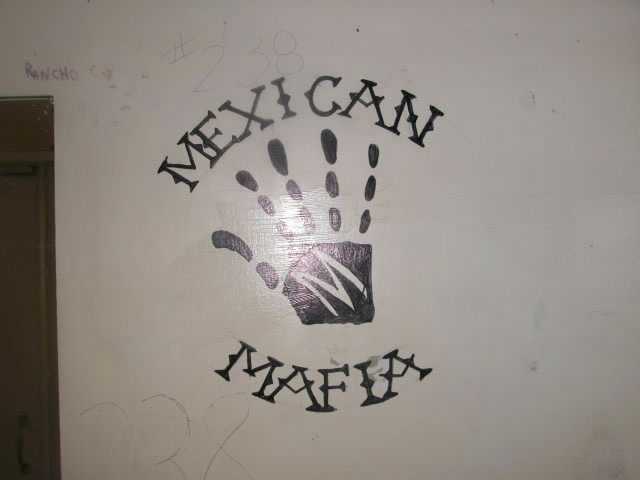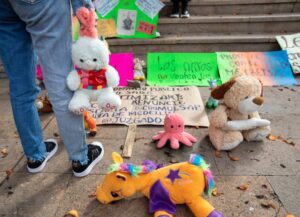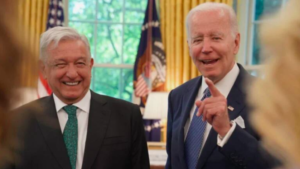
For most people, organized crime is some kind of amorphous blob that is fueled by psychopathic desires to inflict harm for no apparent reason. Most of the time, however, crime stays within a select group of people who take action and others who either consume the output of these illicit activities or compete. Most of the time, too, they would prefer for these activities to not be depicted in media, unless, of course, they are even handed and accurate.
In the state of California, on a few notable occasions, civilians have managed to raise the ire of criminal organizations, not necessarily for engaging on truthful or journalistic activities, but for lying and jeopardizing reputations. This was the case for Edward James Olmos when he filmed ‘American Me’, a fictionalized retelling of the early beginnings of the Mexican Mafia, also known as ‘La eMe’.
American Me – Mexican?
The film was problematic for more than the fictional retellings on specific persons. We will certainly get to those, but first what was up with the title? The title kept insisting that the Chicanos were some kinds of hybrid culture of Mexican and American traditions. In the years since the release of ‘American Me’, it would seem that many have bought into the idea of ‘Mexican American’. In our view, the film’s insistence of branding the Chicano experience as a kind of ‘American’ experience is part of the overall push for intellectual assimilation. Even when telling of the experiences of staunchly nationalistic Mexicans, Olmos and co. felt compelled to place an ‘American’ stamp on the story of a group called ‘the Mexican Mafia’.
As many inmates of the California system have described the emergence of strong prison gangs, the rebellion of sorts, fueled by drug profits and other illicit activities, was to preserve the identity and physical integrity of these inmates. Many of the stereotypical characterization of prison violence is what takes place in jails that do not have a social structure or rule enforcement at the inmate-to-inmate level. Sexual and physical assault took place as a matter of sport when inmates were unorganized, but now is reduced to less than common status.
Factual Issues – Cheyenne Cadena
Most of the storyline is an extrapolation from Rodolfo “Cheyenne” Cadena’s life. In a pivotal scene, however, the doppelganger of Cadena in the form of ‘Montoya’ suffers from sexual assault that prompts him to commit his first murder. Worse still, the fictional ‘Montoya’s death is depicted as the activities of his own crew. Neither event took place, but Cadena’s murder was undertaken by la eMe’s bitter rivals at the time.
This entire above depiction rightfully enraged the leadership of the Mexican Mafia, leading to the deaths of multiple consultants, who provided dialogue and information on the inner workings of the prison-based gang.
A federal racketeering suit filed against La eMe associates showed that there was an attempt to coerce an apology and compensation from Olmos. An LA Times article revealed the court accusations levied thanks to an informant: “Morgan’s wife had rejected a $5,000 settlement offer from Olmos. Those in attendance then discussed how Olmos had profited by using some of their comrades as technical advisors, the motion said.”
Danny Trejo – Truth In Cinema
Actor, Danny Trejo, whose reputation has always been in high regard from Hollywood to Prison, intervened for the eMe somewhat reluctantly to connect himself to the entire situation. Trejo specifies that there were two lies in the creation of the movie.
The 1st lie was the issue around the rape scene. Trejo recalls that Olmos wanted creative license to permit ‘theatrical’ depictions of that scene. However, Trejo, Edward Bunker and other individuals with an amicable relationship to the eMe insisted that the scene was too fictitious.
The 2nd lie, perhaps, even worse that the 1st, was that Edward James Olmos insisted having received the blessing of Joe Morgan. Morgan was the leader of a faction of ‘La eMe’ at that time and denied having given such permission.
Trejo was ultimately asked to intervene, relayed messages from La eMe, and eventually had Edward James Olmos essentially pay a tribute, but all of this was mostly due to Olmos’ profile and the fact that he had the means to pay. According to Olmos, 6 individuals who consulted for ‘American Me’ were killed in prison while 4 were killed outside of prisons.






